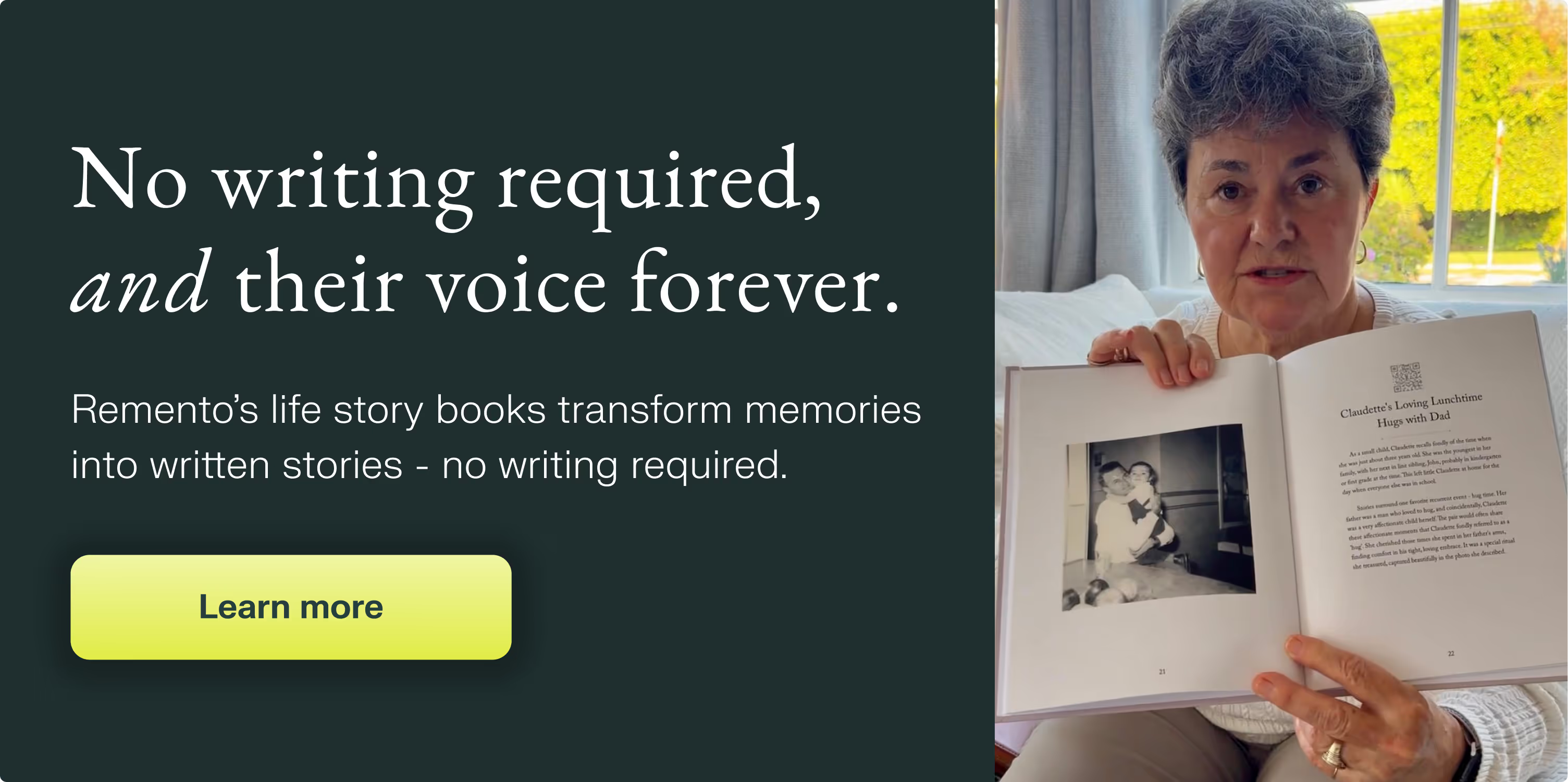Guaranteed to teach you things you never knew.
How to Write Your Memoir: 10 Useful Tips
Writing a memoir is a profound journey of self-discovery that invites both reflection and vulnerability, offering the chance to share transformative experiences that resonate deeply with readers.⬤
Have you ever wondered why people decide to write memoirs? Well, it's actually quite fascinating. Writing a memoir is like taking a deep dive into the depths of your own life. It's a chance to explore your past, reflect on those pivotal moments that have shaped you, and share your unique experiences with the world.
But let's not forget, writing a memoir is no easy task. It requires a great deal of introspection and vulnerability. You have to be willing to dig deep, to peel back the layers and examine the moments that have made you who you are today. It's an intimate journey, one that forces you to confront your own truths and insecurities.
However, despite the challenges, writing a memoir can be incredibly rewarding. It's a chance to immortalize your life's journey, to leave behind a piece of yourself for future generations. And not only that, but it also offers insights and inspiration to the readers. By sharing your experiences, you invite others to embark on their own journey of self-discovery.
So, whether you're a famous public figure or just an ordinary person with extraordinary stories, writing a memoir can be a powerful way to reflect on your life and leave a lasting impact. It's a chance to celebrate the moments that have shaped you, to share your wisdom and lessons learned, and to inspire others to embrace their own unique journey.
10 Tips for Writing a Memoir
Embarking on the journey of memoir writing can be both exciting and daunting. If you're new to writing a memoir, here are some tips on how to begin:
Find your focus.
Unlike an autobiography that chronicles your entire life, a memoir hones in on a specific period, event, or theme. It's about taking that slice of your life and diving into the details, the emotions, and the transformations that occurred. Before you begin writing, contemplate on what unique, personal experience you want to explore. This could be a challenge you overcame, a relationship that shaped you, or an adventure that changed your perspective on life. Remember, the power of a memoir lies in its ability to connect with readers on a deep, emotional level. Therefore, choose a theme or experience that not only has had a significant impact on you, but also has the potential to resonate with others. This focus will serve as the anchor for your memoir, guiding you as you navigate through the memories and moments you want to share.

Write from the heart.
Writing from the heart is where the magic of memoir writing truly lies. It's about unmasking your emotions and allowing yourself to be vulnerable on the page. This doesn't mean you have to share every intimate detail of your life, but rather, it's about being honest and authentic in the experiences you do choose to share. When you write from the heart, you're inviting readers into your world, giving them a glimpse of your joys, sorrows, and everything in between. You're showing them the human behind the words, the person who laughed, cried, struggled, triumphed, and grew. It's this emotional honesty that forms a connection between you and your readers, making your memoir not only a story about you, but also a story that could, in essence, be about anyone. Writing from the heart can be challenging, it often means confronting feelings and memories that may be difficult or painful. But it's through this process that your memoir truly comes to life, becoming a testament to your resilience, your growth, and the indomitable spirit of the human heart.
Create a timeline.
A memoir isn't merely a collection of disjointed memories, but a cohesive narrative that flows smoothly from one event to the next. To achieve this, it's beneficial to sketch out a rough timeline of the events you're planning to include in your memoir. Start by jotting down key incidents, milestones, or turning points relevant to your theme, and arrange them chronologically. This timeline doesn't have to be meticulous or detailed; it's simply a tool to help you visualize your story and ensure that you don't miss out on any significant events. It also aids in maintaining continuity and coherence in your narrative, making it easier for readers to follow and understand. Moreover, the process of creating a timeline can spark memories and details that might have otherwise been forgotten, enriching your story with additional layers of depth and authenticity. As you progress with your writing, you may find yourself adjusting and fine-tuning your timeline, and that's perfectly okay. Ultimately, it's about crafting a narrative that does justice to your experiences and resonates with your readers.
Write an engaging opening.
An engaging opening is the key to capturing your reader's attention from the very first page. It's your first impression, your initial handshake, and it sets the tone for the rest of your memoir. Start with a bang by introducing an intriguing incident, a pivotal moment, or a significant emotion that will hook your readers and make them want to know more about your journey. This doesn't necessarily have to be the most dramatic event, but it should be something that encapsulates the essence of your story and gives a glimpse into what's to come. A strong opening can take various forms: a vivid description that paints a picture, a piece of dialogue that reveals character, or a thought-provoking statement that incites curiosity. Remember, your opening is not just about grabbing attention, but also about establishing a connection with your readers and enticing them to embark on this journey with you. So, invest your time and creativity in crafting an opening that is not only engaging but also reflects the heart and spirit of your memoir.
Show, don't tell.
The principle of "Show, Don't Tell" is a staple in the writing world, especially when it comes to memoirs. This concept urges writers to paint a picture with their words, allowing readers to experience the story through detailed descriptions and evocative language. Instead of simply stating facts or emotions, you're encouraged to show them through your actions, thoughts, and sensory details. For instance, rather than saying "I was scared," you might describe your racing heart, your sweaty palms, or the way your surroundings seemed to close in on you. This technique brings your memoir to life, making it more immersive and engaging for your readers. It allows them to step into your shoes, to see what you saw, feel what you felt, and live the experiences as if they were their own. It's about creating a vivid, tangible world that your readers can step into, making your story not just something they read, but something they experience. So, as you write your memoir, remember to show, not tell. It will transform your narrative from a simple recounting of events into a rich, vibrant journey of experiences.
Include dialogue.
Conversations can provide insights into character personalities, relationships, and dynamics that may not be as apparent through narration alone. Moreover, they add a level of realism and immediacy to your memoir, making readers feel as though they're right there in the moment. But writing dialogue is more than just transcribing verbatim conversations. It's about capturing the essence and emotion of the conversation, and driving the narrative forward. Good dialogue reveals something about the character, advances the plot, or provides necessary information. It should sound natural, but also purposeful. Remember to maintain the unique voice of each character, reflecting their personality and the way they speak. Also, use dialogue tags sparingly and effectively, and let the conversation itself convey the emotions. Including dialogue can be a bit daunting, especially if you're concerned about recalling exact conversations. But, it's important to remember that you're not expected to remember every word spoken. The goal is to represent the conversation in a way that feels authentic and serves the purpose of your story. So, enhance your memoir by weaving in meaningful and engaging dialogues that shed light on your journey and the people who were part of it.
Reflect on your experiences.
A memoir isn’t merely a narration of events, it's a personal journey of growth, transformation, and understanding. Your experiences form the backbone of your memoir, but your reflections give it depth and significance. Take the time to delve deep into your memories, contemplate the emotions they evoke, the lessons they taught, and the changes they sparked. Ask yourself how these experiences shaped you, what you learned, and why they were important. Your reflections can reveal patterns, insights, and truths that were not apparent in the heat of the moment. This introspection not only enriches your memoir but also allows your readers to connect with your story on a deeper level. It's through your reflections that your readers can see their own experiences, fears, hopes, and dreams mirrored. Remember, the power of a memoir lies in its ability to touch others, to resonate with their experiences, and to make them feel seen and understood. So, as you navigate your way through your memoir, remember to pause, reflect, and delve beneath the surface. It's in these depths that the true essence of your memoir lies.
Edit and revise.
Start by reading your memoir from start to finish, making note of any areas that seem unclear, disjointed, or need more detail. Look out for inconsistencies, repetitions, or irrelevant information that doesn't add to your story. Be ruthless in your editing, cutting out anything that doesn't serve your narrative or theme. Pay attention to your language and style, ensuring that your writing is clear, engaging, and evocative. Check for grammar, punctuation, and spelling errors, as these can distract from your story. Remember, editing and revising isn't a one-time task. It's an ongoing process that requires multiple rounds, each time refining your story and making it better.
Get feedback.
Feedback provides an outside perspective on your work, offering valuable insights that you may not have considered. Once you have a draft that you're comfortable sharing, reach out to trusted friends, family members, or a writing group. Encourage them to be honest and constructive with their critique. Ask them specific questions about areas you're unsure about. This could be the flow of your narrative, the clarity of your experiences, or the authenticity of your emotions. Their feedback can help you identify strengths and weaknesses in your writing, areas that need more detail, or parts that might need to be cut. It's important to remember, however, that feedback is simply that - feedback. It doesn't mean you have to make every suggested change. Consider each piece of advice carefully and decide whether it aligns with your vision for your memoir. Sometimes, you may also consider hiring a professional editor. They can provide a more thorough critique, focusing not just on the content, but also on the technical aspects of writing like grammar, punctuation, and structure. Whether it's from friends, family, or professionals, feedback can be an invaluable tool in shaping your memoir into a piece of writing that truly resonates with readers. So, don't shy away from seeking it out.
Stay patient and persistent.
Writing about one's life can be an emotional rollercoaster. There will be moments of joy and moments of pain, times of clarity and times of confusion. There may be instances when the words flow freely and others when you're faced with writer's block. It's essential to understand that this is a normal part of the writing process. Patience is key here. Don't rush yourself or set unrealistic deadlines. Allow your story to unfold at its own pace. Sometimes, taking a break or stepping back can give you a fresh perspective. Persistence is equally important. Writing a memoir is a journey, often a long one. There will be obstacles and setbacks, but it's crucial to keep going. Remember why you started writing in the first place. Remember the story you want to tell and the voices you want to be heard. Use that as motivation to push through the difficult times. Celebrate small victories, like finishing a chapter or finding the perfect phrase. Seek support from fellow writers or loved ones when you need it. Most importantly, believe in yourself and your story. Writing a memoir is not just about the end product, but also the process itself. It's a journey of self-discovery, healing, and expression. So, stay patient, stay persistent, and keep writing. Every word you write brings you one step closer to sharing your story with the world.


Their stories, forever at your fingertips
Remento’s life story books turn a parent or grandparent’s memories of the past into a keepsake book for the future - no writing required.
Capture priceless family memories today
Join the thousands of families using Remento to preserve family history, all without writing a word.
.avif)
